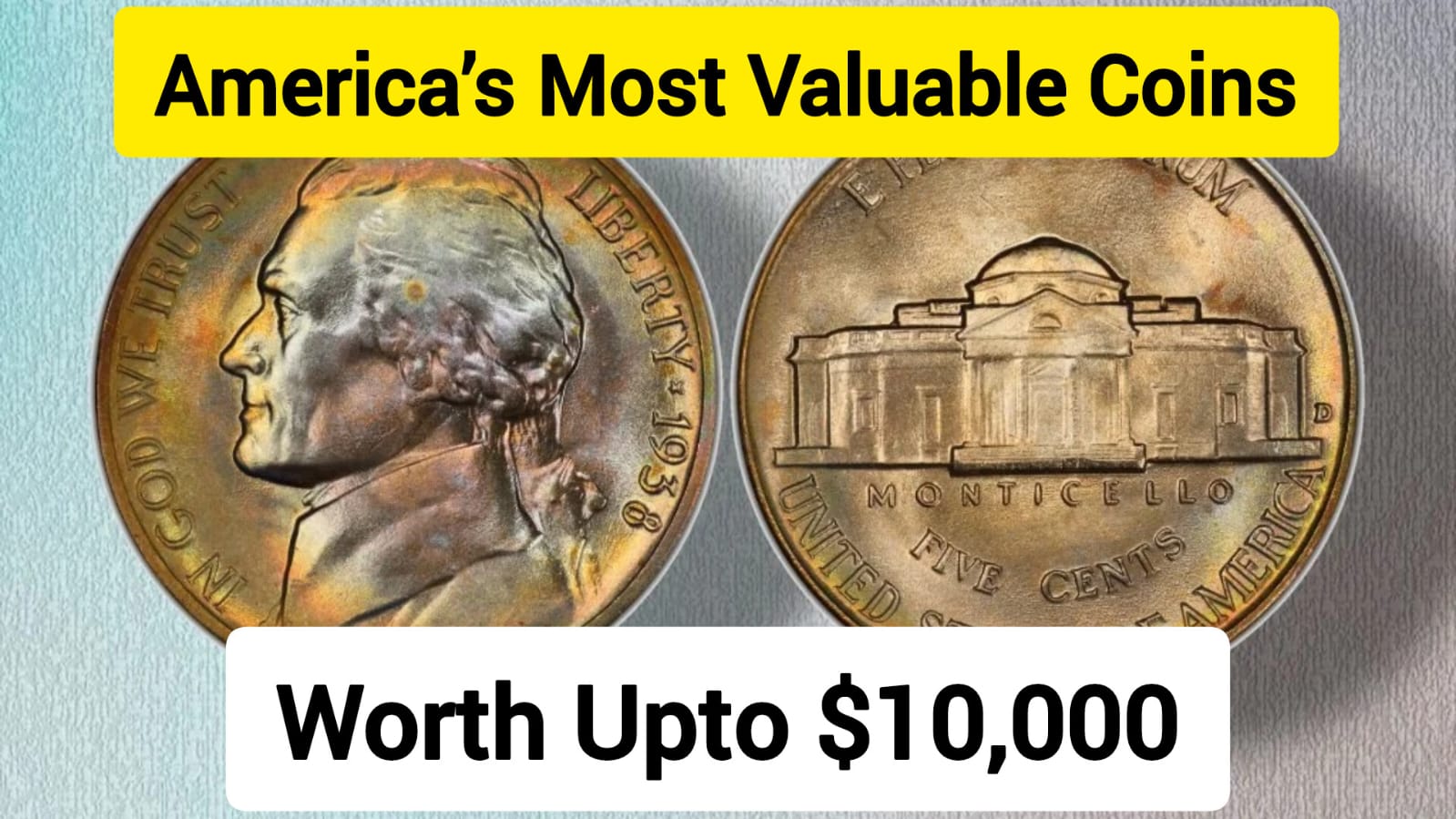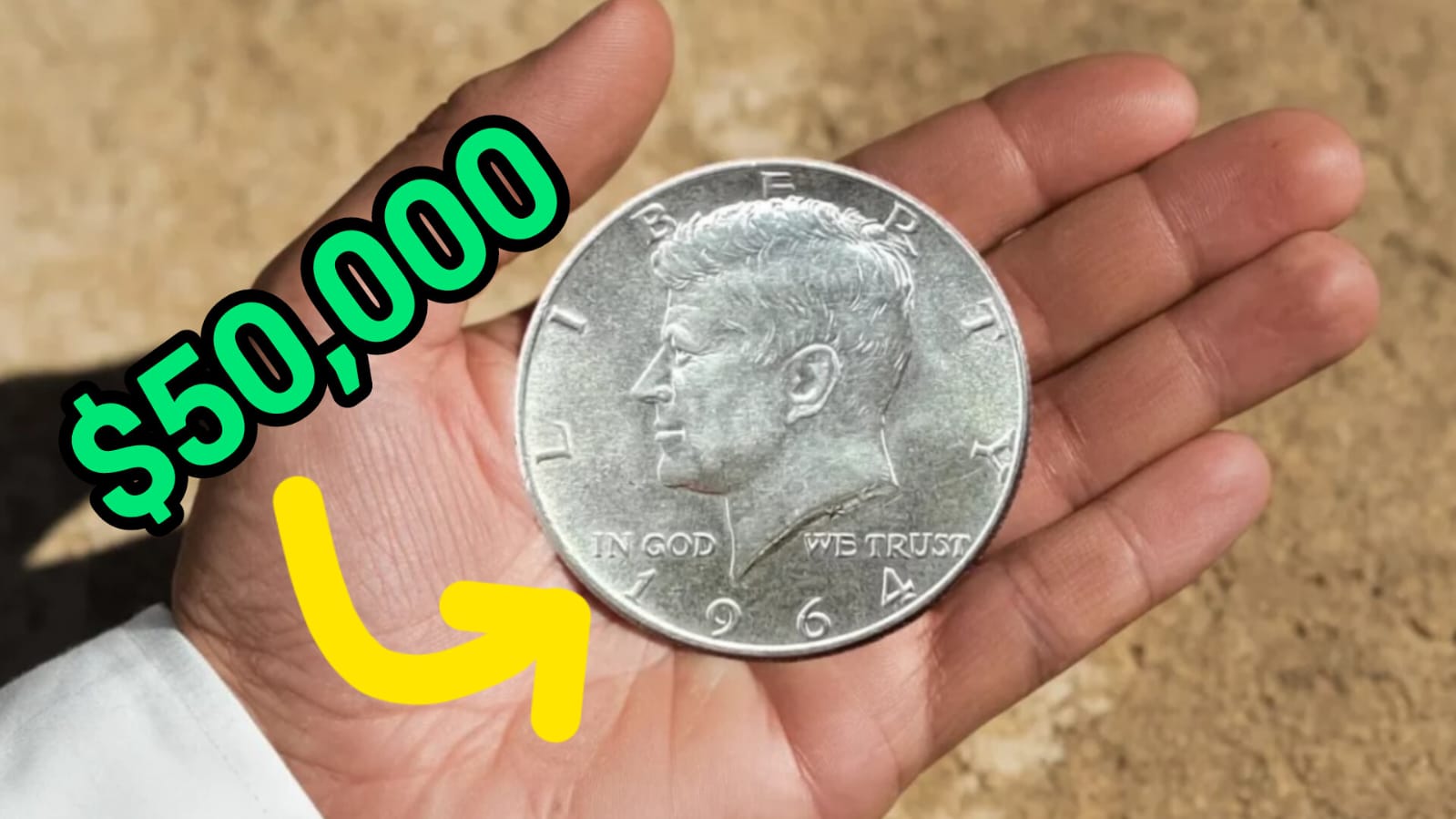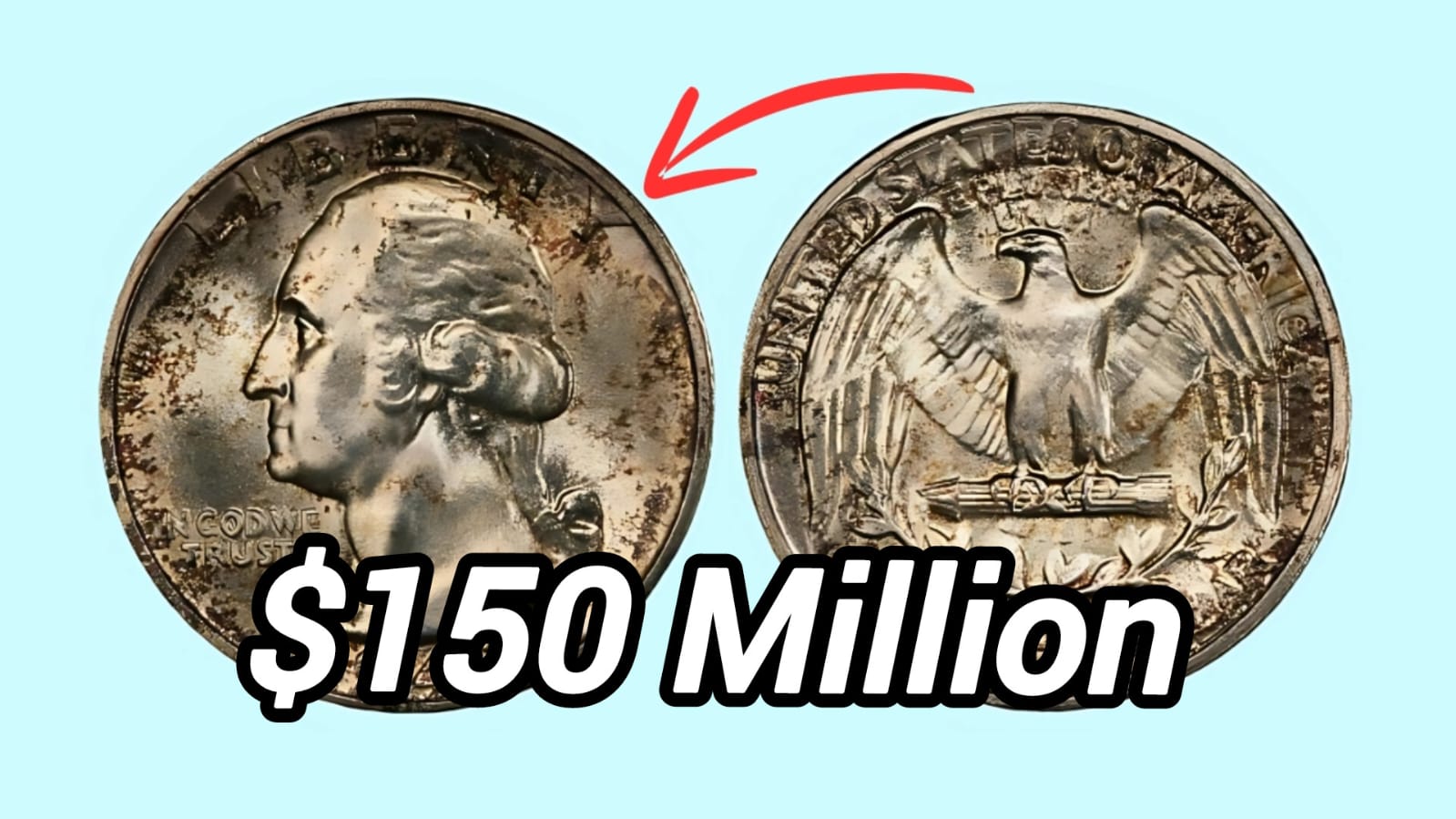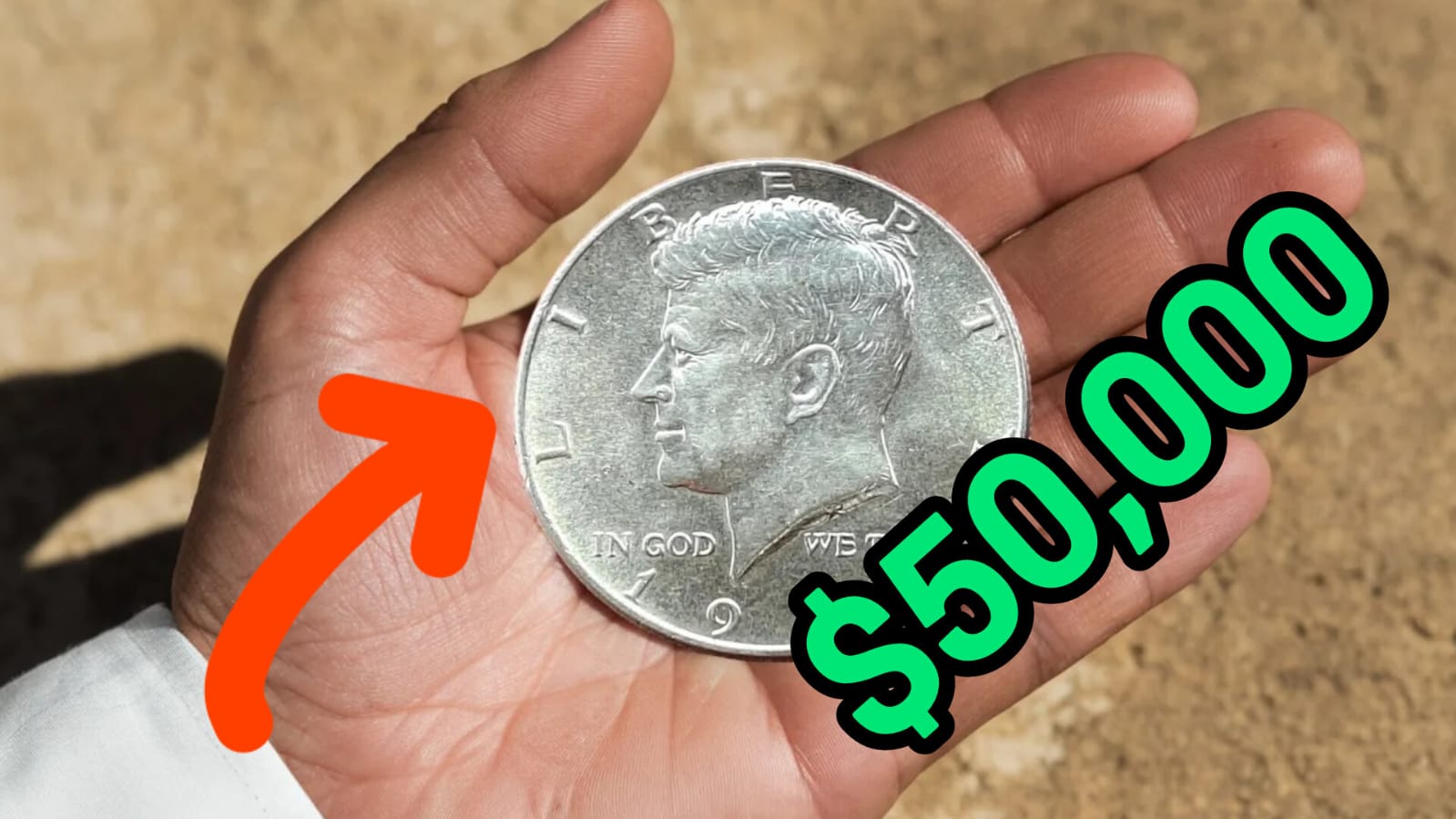Have you ever glanced at the nickels jingling in your pocket and wondered if any of them might be worth more than five cents? While most Jefferson nickels are worth only face value, a select few specimens have become the holy grail for coin collectors, with some valued at thousands or even tens of thousands of dollars.
What’s truly exciting is that some of these valuable nickels could still be circulating today, perhaps hiding in your spare change jar or passing through your hands in everyday transactions.
The Jefferson nickel, introduced in 1938 to replace the Buffalo nickel, has been a staple of American currency for over 85 years. During this long production run, various minting errors, low mintages, and special conditions have transformed ordinary nickels into treasured collectibles.
In this article, I’ll explore what makes certain Jefferson nickels genuinely valuable, help you identify if you might be holding a small fortune in your hand, and reveal which specimens are truly worth hunting for.
The History and Evolution of the Jefferson Nickel
The Jefferson nickel was born out of necessity and innovation. By the late 1930s, the Buffalo nickel (1913-1938) had become difficult to strike properly, with high rates of die breakage frustrating Mint authorities. Once the Buffalo nickel had been in circulation for 25 years, the Treasury Department could replace it without congressional approval, and they moved quickly to do so.
In January 1938, the U.S. Mint announced an open competition for the new nickel design, offering a $1,000 prize to the winner. The requirements were straightforward: the obverse must feature Thomas Jefferson, and the reverse must depict his iconic home, Monticello. By the April 15 deadline, an impressive 390 entries had been submitted. German-born sculptor Felix Schlag was announced as the winner on April 24, though his original design would undergo several modifications before production.
Production of the Jefferson nickel began at all three mints (Philadelphia, Denver, and San Francisco) on October 3, 1938, with official release into circulation on November 15 of that year. The new coins were initially hoarded as novelties, and it wasn’t until around 1940 that they became commonly seen in everyday transactions.
Wartime Silver Nickels: A Unique Chapter
When America entered World War II, nickel became a critical war material needed for armor plating and other military applications. In response, Congress authorized a dramatic composition change in 1942. From late 1942 through 1945, Jefferson nickels were struck in an alloy of 56% copper, 35% silver, and 9% manganese, containing no nickel at all.
To make these “war nickels” easy to identify and withdraw after the conflict, the Mint added large mint marks above Monticello on the reverse. This included the first-ever use of the “P” mint mark for Philadelphia, which had previously struck coins without any mint mark. These silver war nickels remain popular with collectors today, not just for their historical significance but also for their silver content.
What Makes Jefferson Nickels Valuable?
Not all Jefferson nickels are created equal. Several key factors determine whether your five-cent piece is worth face value or thousands of dollars:
Rarity and Mintage Numbers
Some Jefferson nickels had relatively low mintage numbers, making them naturally scarcer. For example, the 1938-D nickel had a mintage of only 5,376,000 – a fraction of the Philadelphia Mint’s production of over 19 million that same year. This lower mintage, combined with being a first-year issue, makes the 1938-D a key date in the series.
Minting Errors and Varieties
Some of the most valuable Jefferson nickels owe their worth to mistakes made during the minting process. The 1942-D/D Horizontal shows a mint mark that was punched twice in different orientations. The 1943-P “Doubled Eye” shows distinct doubling on Jefferson’s eye. The 1939 Doubled Monticello shows clear doubling on the “MONTICELLO” inscription and “FIVE CENTS.” These error coins can command significant premiums, with the 1939 Doubled Monticello selling for up to $23,500 in top condition.
Full Steps Designation
One of the most important factors for Jefferson nickel collectors is the presence of “Full Steps” on the reverse of the coin. This refers to the steps of Monticello being clearly defined and fully struck. Most Jefferson nickels don’t show all the steps clearly due to wear or weak striking, making those with Full Steps (designated as FS, 5FS, or 6FS) much more valuable.
For example, a 1940 Jefferson nickel in Full Steps condition has sold for over $21,000, while the same date in typical condition might be worth only a few dollars. This dramatic price difference makes Full Steps nickels highly sought after by serious collectors.
Condition and Grade
As with all collectible coins, condition is paramount. A Jefferson nickel in uncirculated condition (MS-60 or higher) will be worth significantly more than the same coin in circulated condition. Professional grading services like NGC and PCGS authenticate and grade coins, providing a standardized assessment of a coin’s condition.
The 10 Most Valuable Jefferson Nickels
While many Jefferson nickels command premium prices, these are the top specimens that have sold for thousands of dollars:
| Rank | Year & Variety | Key Features | Estimated Value |
|---|---|---|---|
| 1 | 1942 Frith Jefferson Nickel | Unique specimen | $175,000 |
| 2 | 1939 Doubled Monticello | Doubling on reverse | $23,500 |
| 3 | 1940 Full Steps | Perfect strike with all steps visible | $21,738 |
| 4 | 1943 P (3 Over 2) Overdate | 3 struck over 2 in date | $16,675 |
| 5 | 1948 Full Steps | Perfect strike with all steps visible | $12,000 |
| 6 | 1957 Full Steps | Perfect strike with all steps visible | $4,303 |
| 7 | 1955 D Over S | D mint mark punched over S | $3,738 |
| 8 | 1954 Repunched Mint Mark | Mint mark punched multiple times | $3,450 |
| 9 | 1938-D Full Steps | First year Denver mint with perfect strike | $3,000+ |
| 10 | 1945 Uncirculated P | War-time silver composition | $2,250 |
1942 Frith Jefferson Nickel – The Holy Grail
The 1942 Frith Jefferson Nickel stands as the most valuable in the series, having sold for an astounding $175,000. This unique specimen represents the pinnacle of Jefferson nickel collecting and demonstrates just how valuable these seemingly common coins can become under the right circumstances.
1939 Doubled Monticello – A Dramatic Error
The 1939 Doubled Monticello Jefferson Nickel shows dramatic doubling on the reverse, particularly visible on the word “MONTICELLO” and “FIVE CENTS.” This doubling occurred during the die-making process and created one of the most valuable Jefferson nickels. In top condition, this error coin has sold for up to $23,500, making it a true treasure if you can find one in your change.
How to Identify the 1939 Doubled Monticello
To identify this valuable error:
- Look for clear doubling on the word “MONTICELLO”
- Check for doubling on “FIVE CENTS”
- Use a magnifying glass to examine the details
- Compare to normal 1939 nickels to spot the differences
1943-P 3 Over 2 Overdate – A Wartime Rarity
The 1943-P 3 Over 2 Overdate Jefferson Nickel is a fascinating error where the final digit in the date was first punched as a “2” and then corrected to a “3.” This created a visible overdate that’s highly prized by collectors. In top condition, these can sell for over $16,000, with even circulated examples commanding hundreds of dollars.
How to Find Valuable Jefferson Nickels
Could you be sitting on a fortune without knowing it? Here are some practical ways to hunt for these valuable coins:
Check Your Change and Collections
Start by examining any Jefferson nickels you already have. Look through old coin jars, inherited collections, and even your everyday change. Pay special attention to the dates, mint marks, and any unusual features on the nickels you find.
Search Coin Rolls
Bank rolls of nickels can sometimes contain overlooked treasures. While the odds of finding extremely rare specimens are low, many collectors have found valuable coins this way.
Attend Estate Sales and Auctions
People often sell old coin collections without realizing their true value. Estate sales, garage sales, and auctions can be gold mines for finding valuable nickels at bargain prices.
Join Coin Collecting Communities
Connect with other collectors through clubs or online forums. These communities often share tips on where to find rare coins and can help authenticate potential discoveries.
Authentication: Separating Treasures from Fakes
If you believe you’ve found a valuable Jefferson nickel, proper authentication is crucial. Here’s how to verify your find:
- Detailed Examination: Use a magnifying glass to check for signs of alteration or authentic error features.
- Weight and Measurement: Compare your coin’s weight and dimensions to known specifications.
- Professional Grading: For potentially valuable coins, consider professional authentication services like PCGS (Professional Coin Grading Service) or NGC (Numismatic Guaranty Corporation).
Remember, the most valuable Jefferson nickels are also frequently counterfeited. Professional authentication is worth the investment if you believe you’ve found something special.
Conclusion
The Jefferson nickel, a coin that most Americans handle regularly without a second thought, can sometimes be worth thousands or even tens of thousands of dollars. From the 1942 Frith specimen valued at $175,000 to the 1939 Doubled Monticello worth over $23,000, these rare nickels represent fascinating pieces of American numismatic history. What makes the hunt for these coins so exciting is that they could still be in circulation – perhaps even in your pocket right now!
As you sort through your change or coin collection, remember that knowledge is your most valuable tool. Understanding what makes certain Jefferson nickels valuable and how to identify them increases your chances of finding a genuine treasure. Even if you don’t discover a $10,000 nickel, the journey through American history and numismatics is rewarding in itself. So check those coin jars, roll up your sleeves, and happy hunting!
FAQs About Valuable Jefferson Nickels
1. How can I tell if my Jefferson nickel has the valuable “Full Steps” feature? Look at the steps of Monticello on the reverse of the coin. If you can clearly see five or six distinct, uninterrupted steps (not worn or weakly struck), your coin might have the valuable Full Steps designation. This is best determined using a magnifying glass in good lighting.
2. Are Jefferson nickels still worth looking for in circulation today? Absolutely! While many valuable specimens have been removed from circulation over the years, new discoveries are still being made. The vast number of nickels produced means that some treasures are still waiting to be found in everyday change.
3. Should I clean my old Jefferson nickels to make them look better? No! Never clean your coins. Cleaning can significantly reduce a coin’s value, as collectors prefer coins with original surfaces, even if they show some toning or natural wear. A cleaned coin is immediately obvious to experienced collectors and will sell for much less than an uncleaned example.
4. What’s special about the 1938-D Jefferson nickel? The 1938-D is valuable because it’s a first-year issue with a relatively low mintage of 5,376,000. It’s especially valuable in high grades with Full Steps, where specimens can sell for thousands of dollars.
5. How much silver is in war nickels, and are they worth saving? War nickels (1942-1945 with large mint marks above Monticello) contain 35% silver, giving them an intrinsic metal value above face value. Each war nickel contains about 0.0563 troy ounces of silver. Even in worn condition, they’re worth saving for their silver content, and specimens in better condition can be worth significantly more to collectors.
10 Rare Jefferson Nickels Worth $500 Each – Hidden Treasures in Your Pocket Change
10 Most Rare & Valuable State Quarters Coins Worth 35 Million USD – Still in circulation



